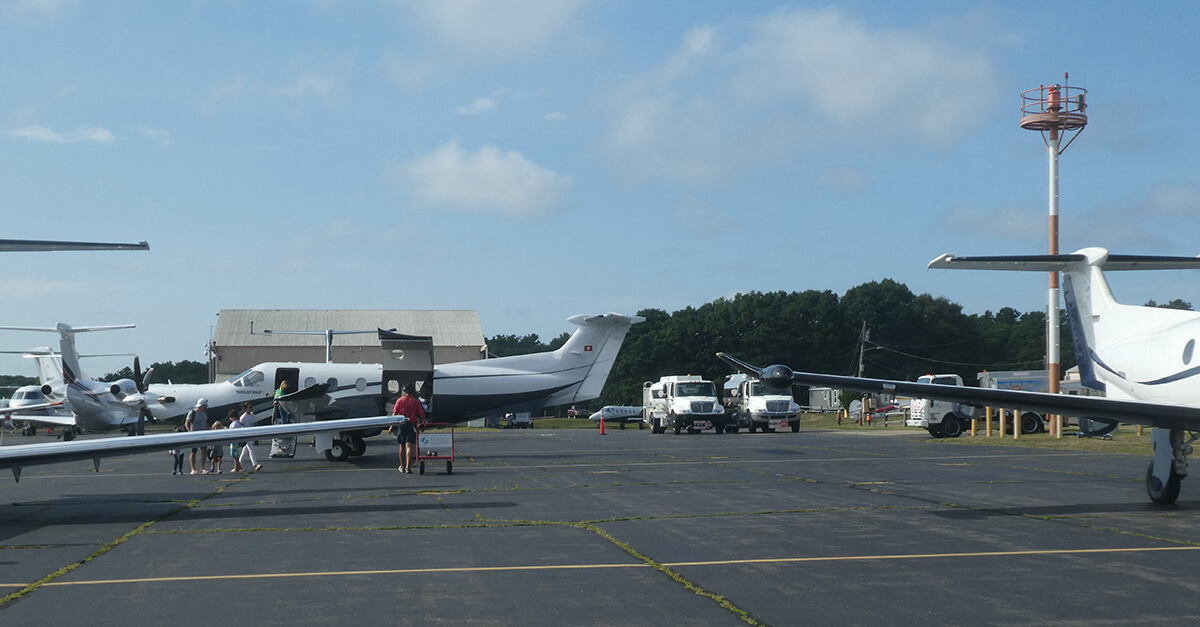
May 29, 2020
The 2020 season at New York’s East Hampton Airport (HTO) is off to a slow start with aircraft operations down more than 75% compared to this time in years past, due to the COVID-19 pandemic.
Despite the downturn in traffic, the general aviation community continues its voluntary efforts to “fly neighborly.” Helicopter routes have changed drastically as part of the noise-mitigating, over-water initiative, and the voluntary curfew continues to apply to all aircraft. The seasonal air traffic control tower is now in operation as well.
HTO long has been a busy airfield with close to 30,000 operations taking place during the summer season. In recent years, the airport has become a flashpoint for noise-related challenges when the town adopted restrictions limiting the number of weekly trips an aircraft could make and also mandated a night curfew for all aircraft and shoulder curfews for aircraft classified as “noisy.”
NBAA, the Friends of East Hampton Airport and others objected that these mandatory restrictions on aircraft operations violated the Airport Noise and Capacity Act of 1990 (ANCA) and ultimately won in court. Working within the framework of ANCA, the town has learned that it is unable to enact mandatory local restrictions and is required to operate the airport while federal grant assurances are in effect.
“The airport is now under the threat of outright closure when its federal obligations expire in September of 2021. Both fixed and rotary-wing pilots are asked to remain sensitive to community concerns,” said Alex Gertsen, NBAA director of airports and ground infrastructure.
“Everyone who uses the airport is part of the solution,” said Steve Tuma, president and COO of Sound Aircraft Services, the FBO on the field, which respects the 11 p.m.-7 a.m. voluntary curfew and does not provide services during those hours.
New voluntary over-water routes developed by the Eastern Region Helicopter Council (ERHC), in collaboration with airport officials, have gone into effect this year.
“We hope and expect our fellow pilots will do the right thing,” said Jeff Smith, ERHC vice president of operations and representative for HTO. Smith noted that helicopter arrivals generally should maintain altitudes of 3,500 feet, with a step-down approach near the airport to reduce noise impact. Smith explained that “The community is extremely noise sensitive.”
“There is a significant portion of the noise-impacted community that wants to give the routes a chance to see if they are going to be successful,” Tuma added.
Kent Feuerring, president of the East Hampton Aviation Association (EHAA), added it is critical for the Long Island community to understand the importance of the airport to the region.
“East Hampton and the surrounding towns depend on the airport, which is a driver of the local economy,” said Feuerring. “The airport also enables life-saving Medevac flights, connecting eastern Long Island to the hospitals and trauma centers further west, disaster relief for the towns linked to the rest of the Island by just a single bridge and even animal rescue flights.”
Tuma said he has seen the value of the airport grow over the years. “Not only does the airport bring in many tax paying home owners, who would likely abandon the area if the airport closes, it supports many jobs on-site and directly and indirectly at the local businesses throughout our community,” he said.
Feuerring, Smith, Tuma and Gertsen emphasized that the future viability of the airport depends on compliance with voluntary policies and procedures to mitigate noise. “Our organizations have worked hard to show the aviation community is a good neighbor and can’t afford to have even a single aircraft operator not join the efforts to address community concerns,” said Gertsen.


 International Business Aviation Council Ltd.
International Business Aviation Council Ltd.